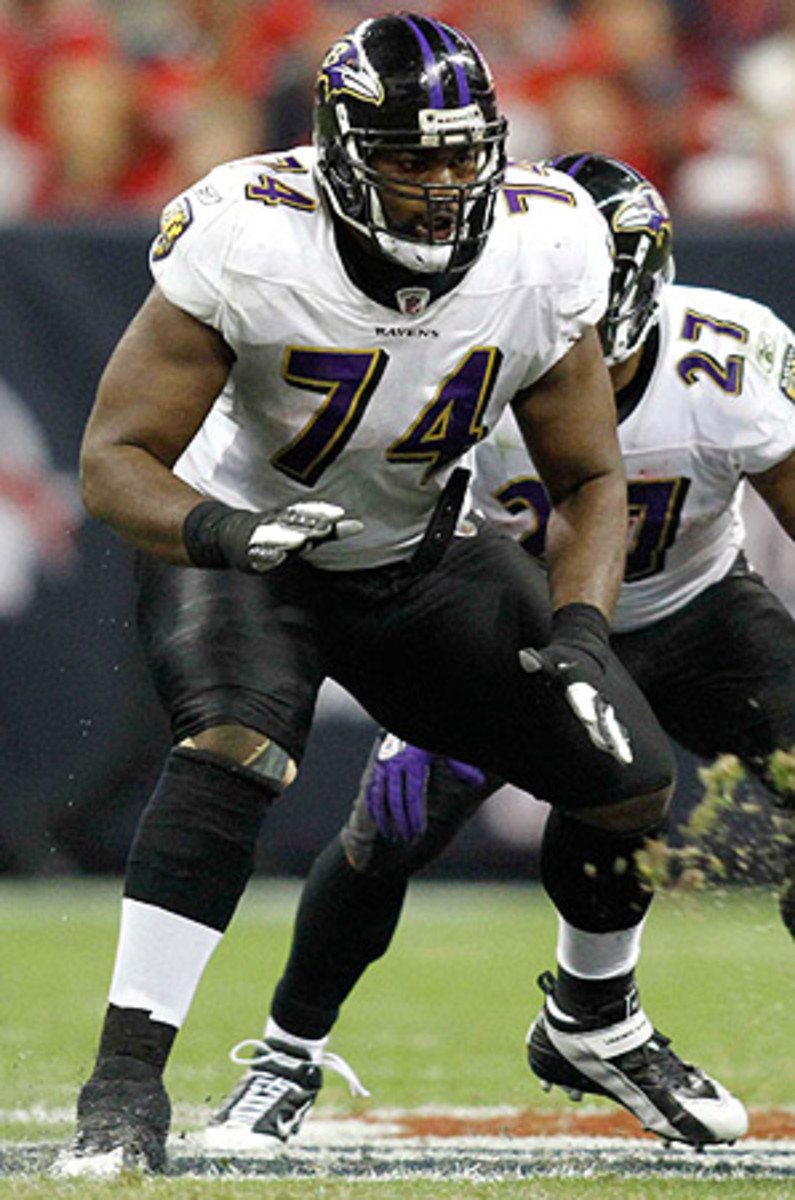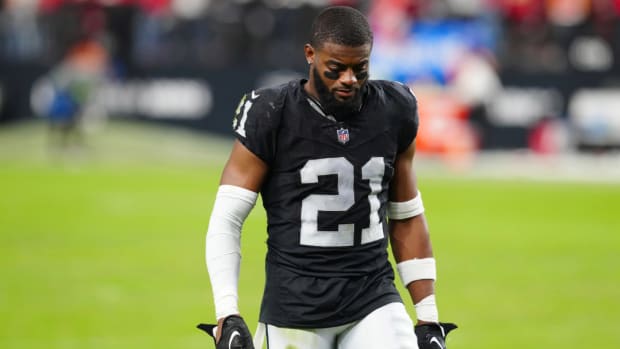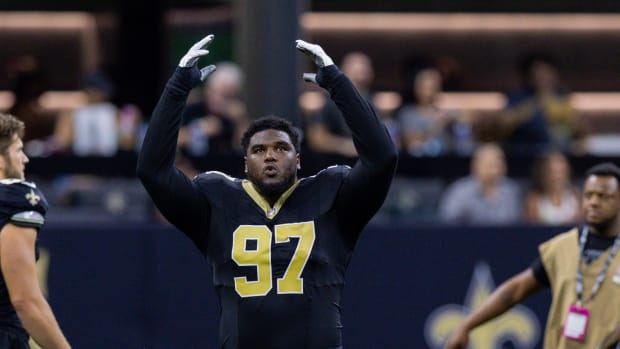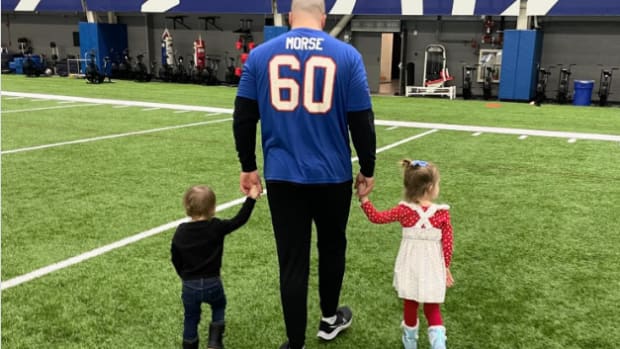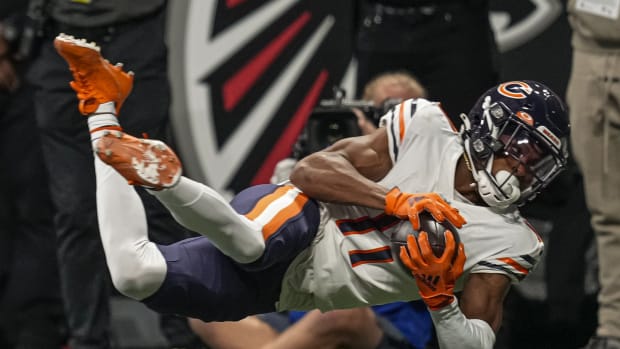Ten glaring holes that need to be filled by teams in 2011 NFL Draft
What are the biggest needs in the draft? The Quality Stats we use at Cold, Hard Football Facts tell some pretty compelling stories that highlight, in no uncertain terms, the biggest needs for each and every team.
Below are 10 headline needs we've identified for some the league's marquee teams or those clubs that offered the most compelling statistical storylines of 2010.
Some are obvious. Newsflash: Arizona needs a quarterback! But others run counter to the conventional wisdom that causes so many teams to make bad decisions on draft day.
Immediate need: quarterback
If you ever doubted Kurt Warner's Hall of Fame credentials, just take a look at the instant disintegration of the Arizona passing attack in the wake of his retirement before the 2010 season.
The Cardinals fielded an incredible passing attack from 2007-09, including one that nearly carried the team to a Super Bowl victory in 2008.
But Arizona's air game deflated right before our very eyes in 2010, in almost unbelievable fashion. The Cardinals finished 31st in Passing Yards Per Attempt (4.76 YPA), 31st in Offensive Passer Rating (60.49), 31st in Passer Rating Differential (-23.06) and dead last in our new Real Quarterback Rating (64.47), which takes into account sacks, fumbles and rushing yards, as well as the traditional passing indicators used to rate quarterbacks.
Given those dreadful numbers, it's a miracle Arizona won five games.
The former quarterback of the future, Matt Leinart, was jettisoned before the start of the season and deservedly so based upon past performances. But four different quarterbacks tried to fill the void left by Warner and Leinart, and each failed worse than the next.
The team's best passer, Derek Anderson, started nine games, threw seven TD passes (the team totaled 10 for the year) and posted a team-best 65.9 passer rating -- which would have been a nice number for Charlie Trippi and the 1947 NFL champion Cardinals.
And remember, Arizona still had the great Larry Fitzgerald in the lineup. He caught 90 passes for 1,137 yards and six of the team's 10 receiving TDs.
But the NFL is not a receiver's league. It's a quarterback's league. The 2010 Cardinals provided plenty of proof that receivers have little impact on their own. To return to Super Bowl form, they must find a legit NFL quarterback.
Immediate need: a blind-side tackle
The Ravens have a rep as a tough, grind-it-out offense, with Ray Rice pounding away at defenses, while Joe Flacco punctures opponents across the middle with Todd Heap and occasionally over the top with Anquan Boldin.
The truth, though, is the running game lacked explosiveness and was the team's greatest liability in 2010. Baltimore gave it the old college try: only five teams ran the ball more often than the Ravens (487 attempts). But 27 teams posted a higher average per attempt (3.76). Look at it this way: Indy took plenty of grief for its moribund ground game, but the Colts (with 3.77 YPA) actually ran the ball a hair better than the Ravens.
Meanwhile, Michael Oher is an inspiring story, and played well on the right side of the line as a rookie. But he didn't protect Joe Flacco's blind side very well when moved to LT in 2010. He allowed seven sacks and was whistled for 10 penalties -- not good numbers for your top tackle.
Baltimore, so solid in so many areas, was merely average at protecting Flacco, allowing a Negative Pass Play on 9.42 percent of dropbacks (18th league-wide). And they finished No. 22 on our Offensive Hog Index in 2010. The performance of the OL was easily the statistical weak link of the otherwise rock-solid Ravens.
Immediate need: studs on the offensive line
It could be worse for Baltimore. They could have fielded Chicago's offensive line, which was the worst in football in 2010.
How do you get the NFL's worst OL? You more or less ignore the position in the draft for years on end.
The Bears took OT Marc Colombo with the No. 1 pick way back in 2002. In the eight drafts since then -- a total of 69 picks -- they've grabbed a total of nine offensive linemen, but only one higher than the fourth round (OT Chris Williams, No. 1, 2008).
So the team's neglected its offensive line, while Williams (like Colombo before him) hasn't exactly lived up to the expectations of a No. 14 overall pick. It's resulted in a very glaring weak link in Chicago: the Bears ranked dead last in 2010 on our Offensive Hog Index.
They struggled to run the ball (3.89 YPA), they were the worst unit in the NFL at protecting the passer (a Negative Pass Play on a 14.6 percent of drop backs) and they struggled to convert third downs (32.8% success), especially in short-yardage situations.
So the team needs a complete overhaul of the position. And that process begins with finding a legit anchor at left tackle (Williams was moved to guard by the end of 2010) to protect Jay Cutler, who was the most-sacked QB in the NFL last year (52).
It's actually a miracle that Lovie Smith's team was a play or two away from heading to the Super Bowl with third-stringer Caleb Hanie at quarterback behind the NFL's worst offensive line. We can only wonder what the team might do with a legit front five up front giving Cutler a chance to live up to his promise.
Immediate need: pass defenders
The conventional wisdom is that Dallas boasts a talented defense that needs to live up to the hype. The Cold, Hard Football Facts say this so-called talent is vastly overrated and the team needs to go hit pass defenders hard and heavy on draft day -- as they have so many times in recent years.
The Cowboys have devoted an incredible amount of draft-day resources over the past decade to cornerbacks, safeties, linebackers and pass-rush specialists, including first-round picks Roy Williams (2002), Terence Newman (2003), DeMarcus Ware (2005), Marcus Spears (2005), Bobby Carpenter (2006), Anthony Spencer (2007) and Mike Jenkins (2008).
They have nothing to show for it.
Dallas has fielded just two units since 2000 that ranked in the Top 12 in scoring defense. They actually boasted the league's No. 2 scoring defense in 2009 and then just fell apart at the seams during the disastrous 2010 season, dropping all the way to No. 31 in scoring defense (27.2 PPG).
It was the worst defense in Dallas since Tom Landry's fledgling club surrendered 28.7 PPG in 1962.
When a team gives up too many points, the culprit is always the same: pass defense.
The 2010 Cowboys were no exception : they ranked 28th in Defensive Passing Yards Per Attempt, allowing opposing passers to rip them for 6.76 yards every time they dropped back to pass; 29th in Defensive Passer Rating (92.75); and tied with Houston for dead last in TD passes allowed (33).
The consistent struggles stand in sharp contrast to the resources spent in the draft. So maybe the bigger issue is the way the team evaluates defensive talent both in the draft and then on the field.
A lot of those high picks were still key contributors last year -- including Newman, Ware, Spencer and Jenkins. But those contributions added up to one of the worst defenses in football.
Time to go back to the drawing board.
Immediate need: center or guard
What do you get the team that has almost everything? How about a ferocious earth mover in the middle of the OL, in the mold of an Alan Faneca or Logan Mankins?
Center and guard are the least-drafted early-round positions in football: just 14 total in the first round over the past decade. But if ever a team should grab an interior lineman early, it's the Packers.
They appeared to have landed their franchise left tackle with last year's top pick, Bryan Bulaga. He started most of the season, made most all-rookie teams and became the youngest Super Bowl winner in history -- he was just 21 when the Packers hoisted the Lombardi Trophy in Dallas (he turned 22 in March).
But Bulaga could use a little help up front, especially there in the soft underbelly of the OL, the team's lone weak link.
The Packers were a statistically dominant juggernaut in 2010, even as they struggled to a 10-6 record and barely squeaked into the playoffs, before proving their potential in the postseason.
They fielded playmakers on both sides of the ball and their statistical dominance was evident by the fact they ranked No. 1 in the NFL in average performance across the board in all of our Quality Stats -- including No. 1 in Bendability (our measure of defensive efficiency), Defensive Passer Rating and Passer Rating Differential. They were in the top five in Passing Yards Per Attempt, Defensive Passing Yards Per Attempt, Quarterback Rating (our new indicator that measures all aspects of QB production), Defensive Quarterback Rating and Offensive Passer Rating.
This was one sick statistical team.
The only relative weakness was on the offensive line, where the Packers ranked a humble No. 16 league-wide in our Offensive Hog Index. The Pack ran the ball poorly (3.81 YPA) and struggled to protect Aaron Rodgers -- who was sacked at least once in every game since Week 8, including all four playoff games.
Put some beef up front, and this team will be well stocked for another Super Bowl run in 2011.
Immediate need: a stud defensive lineman
Colts fans and NFL experts are screaming for offensive linemen in Indy. We understand the passion. The Colts averaged 3.77 YPA on the ground in 2010 (27th league-wide).
But plenty of teams have won Super Bowls with poor running attacks, including many worse than the one Indy fielded in 2010. In fact, as noted above, the Super Bowl champ Packers did not run particularly well, either: just a tiny shade better than Indy with an average of 3.81.
Instead, there are much bigger problems for Indy on the defensive line, where the Colts ranked No. 28 on our Defensive Hog Index. Meanwhile, they were actually one of the better OLs in football: No. 7 on our Offensive Hog Index.
The Indy defensive front got pushed around like a practice field blocking sled all year long. The Colts surrendered 4.57 YPA on the ground (25th). But that wasn't even the worst of the problems.
The biggest problem was the team's vastly over-estimated pass-rushing capabilities. Dwight Freeney and Robert Mathis have a reputation as a great tandem of pass-rushing defensive ends. They did account for 21 sacks last year.
But beyond those two, the Indy pass rush is a disaster. The Colts were 31st in the NFL at forcing quarterbacks into Negative Pass Plays. Just 7.1 percent of opposing drop backs ended in a sack or INT. Only the dreadful Denver defense was worse.
So the Colts couldn't stop the run in 2010. But they made up for it by failing to get after the quarterback. A huge injection of size and muscle in the defensive front will go a long way toward improving the team's fortunes. It will certainly do more than adding to the OL.
Immediate need: a shutdown corner or pass rush specialist
Some observers say the David Garrard Era has come to an end, and that it's time for the team to invest in the proverbial "quarterback of the future."
The Cold, Hard Football Facts say otherwise, for two reasons.
One, we understand Garrard is not a Hall of Fame quarterback. But he's been fairly efficient and productive during his career. He posted a solid 90.8 passer rating last year. In fact, he posted the highest single-game "uncapped" passer rating of all of 2010, with his 184.6 mark vs. Dallas in Week 8 (17 of 21, 260 yards, 12.4 YPA, 4 TD, 0 INT). He's a guy who can win for you if paired with a great defense.
Which brings us to reason No. 2: the Jaguars fielded the worst pass defense in football in 2010. It was one of the more under-reported statistical stories of the year. And in a league in which you can't win if you can't stop the pass, it proved a devastating flaw.
Jacksonville finished dead last in Defensive Passing Yards Per Attempt -- they were torched for 7.53 yards every time an opposing QB dropped back to pass. It's a frighteningly bad number. The Jags also finished dead last in Defensive Quarterback Rating (our new indicator that accounts for sacks, fumbles and QB rushing, as well as passing stats). Meanwhile, only Houston was worse than Jax in Defensive Passer Rating.
Lack of a pass rush was a huge problem: Jacksonville registered just 26 sacks all year (only Denver was worse with 23). A total of 13 INTs also ranked well within the bottom half of the league. The Jags produced a Negative Pass Play on just 7.33 percent of opposing dropbacks, 29th in the NFL. The league's worst pass defense was a big reason why the 2010 Jaguars fielded the worst defense in franchise history (419 points allowed).
Jacksonville could put Peyton Manning or Tom Brady at quarterback. But even those guys are not going to do much better than 8-8 with the worst pass defense in football. The day will come when they need to replace Garrard. But right now, the Jaguars have a much bigger need trying to find a way to make life tough on opposing passers.
Immediate need: an elite pass rusher
It was easy for Bill Belichick to look like a genius during his defensive coordinator days with the Giants. Back then he had Lawrence Taylor, perhaps the most feared pass rusher of the past 40 years, making life hell on opposing passers.
Here during his New England days, he's duct-taped together defenses with the likes of Mike Vrabel and Willie McGinest as his top pass rushers. Nice players, sure. But not the leg-snapping threat of an LT. Efforts to find their replacements in free agency have largely failed (Roosevelt Colvin, Adalius Thomas) and efforts to pick up an elite pass rusher in the draft have been non-existent.
It's time to change that philosophy.
After all, Belichick maintains his reputation as a genius coach. But the onfield product does not live up to the coach's billing. The last truly great pass defense Belichick produced was in 2003, when the Patriots led the NFL in scoring D (the only time under Belichick) and posted a 58.6 Defensive Passer Rating, one of the toughest pass-defense units of the past decade.
Since then, the pass defense has consistently failed New England in key situations, from Eli Manning's final drive of Super Bowl XLI to Mark Sanchez's 127.3 rating effort against the Patriots in the divisional playoffs back in January.
The lack of a pass rush is a huge problem. The Patriots appeared to find a shutdown corner last year in Devin McCourty. But even the best CBs can cover only so long if a quarterback has all day to pass. And in recent years, opposing quarterbacks have sat patiently in the pocket picking apart New England's defenses.
The team has danced here in the lead-up to the draft with the likes of former Heisman Trophy-winning running back Mark Ingram. But drafting him would be a huge mistake. After all, the team ran the ball incredibly well in 2011 and productive running backs are a dime a dozen in the NFL, as New England history proves.
An elite pass rusher will have a much bigger impact, especially for a team that already boasts an elite offense and has proven desperate for big play makers on defense in the postseason.
Immediate need: wide receiver
NFL teams obsess over wide receivers, in the mistaken notion that they're a quick fix that will have a big and immediate impact on the team's fortunes. NFL teams over the past decade have drafted 40 WRs in the first round, more picks than any other offensive position.
NFL executives could not be more terribly misguided than they are when it comes to their obsession with wide receivers.
The truth is that wideouts are easily the riskiest pick in the first round of the draft. There are two basic problems with drafting them, especially early. One, wide receivers have a high rate of failure. And two, even if you nail the pick, wide receivers have a very minimal impact on overall team success.
Look at two of the great first-round wide receivers of the past several years: Larry Fitzgerald and Calvin Johnson.
Fitzgerald's Cardinals only enjoyed success with Kurt Warner at QB. Fitzgerald's offenses stunk before Warner arrived and, as noted above, Arizona's passing attack was a disaster last year, in the wake of Warner's retirement. Johnson, meanwhile, has been highly productive with the Lions, including two 1,000-yard seasons and 33 TD receptions in four years. Johnson enjoyed his best year in 2008, with 78 catches, 1,331 yards, 17.1 YPC and a league-best 12 TDs -- all career highs. It's worth nothing his 2008 Lions went 0-16.
So we almost ALWAYS advise against picking wide receivers, especially in the first round. But there are very rare exceptions: those few teams solid in every other aspect of the game but in need a little boost to the offense. And the Jets represent one of those rare teams.
There are few statistical weak links on this team outside the quarterback position. But Mark Sanchez is one of the game's rising stars, he's already proven he can win big games and make clutch plays, and the team is obviously committed to him for the foreseeable future.
So they need to arm him with better weapons. Coupled with the fact the team's biggest receiving weapon, Braylon Edwards, may not be back, and it makes the Jets one of the few teams for whom it is advisable to chase a gamebreaking wide receiver early in the draft.
Immediate need: a left guard
The Steelers have fielded plenty of fine teams over the past three years, including the Super Bowl champs in 2008 and the AFC champs in 2010.
But the offensive line has consistently been the organization's weak link and has quite literally never recovered from the loss of future Hall of Fame guard Alan Faneca, who was signed to a big-bucks deal by the Jets before the 2008 season (and played with the Cardinals last year).
We understand the reason the Steelers let Faneca go. He was getting older and he demanded huge money. Regardless, Pittsburgh has struggled to both run effectively and protect the passer in the years since he's left, often in quite frustrating fashion.
This weak link was exposed badly in the single biggest play of the 2010 season and the turning point of the Super Bowl XLV against the Packers.
The Packers had just taken a 7-0 lead in the first quarter when QB Ben Roethlisberger dropped back to pass at his own goal line. He had no chance. Left guard Chris Kemoeatu, the heir to Faneca's throne at LG, was tossed seven yards backward by DT Howard Green, who got a paw up in Big Ben's face. The QB's pass fluttered badly and was intercepted by Nick Collins, who returned for a TD.
The score was 14-0. There was plenty of football still be played. But, statistically speaking, the outcome of the game was set in stone: every team in Super Bowl history that's suffered a pick-six has lost. The Steelers proved no exception.
It was just one play. But it underscored in dramatic fashion the fact that the Steelers need help on the OL. In the biggest moment of the biggest game of the year, the OL snapped -- as weak links usually do. Pittsburgh was an elite team in every measure last year, except on the offensive line.
The Steelers ranked No. 15 on our Offensive Hog Index in 2010, No. 18 in average per rush attempt (4.09) and No. 22 at protecting the passer -- allowing a sack or INT on 10.0 percent of drop backs in 2010. And this final flaw haunted them in the biggest play of the biggest game of the 2010 season.
Pittsburgh boasts elite defense filled with playmakers, an elite if uneven quarterback, great weapons at the skill positions on offense and all the tools needed to make another Super Bowl run. They could use an elite offensive lineman, too.
































